“We believe that it’s really important to come up with core values that you can commit to. And by commit, we mean that you’re willing to hire and fire based on them. If you’re willing to do that, then you’re well on your way to building a company culture that is in line with the brand you want to build.”– Tony Hsieh, November 15, 2010, The Huffington Post
Buffer’s founder, Joel, set about identifying his values and the values of the 10 other employees in 2013, and we first published them in 2014.
At the time we were inspired by several businesses who put their company culture into words through a set of shared values. Many of the values were derived from Dale Carnegie’s foundational work in How to Win Friends and Influence People, which has served as a guide for Buffer in many things.
Establishing our company values was an eye-opening process that led to some tough challenges as well as triumphs, but ultimately established a foundation for a strong, well-defined culture.
It’s been about five years since we initial defined of our company values, and although they have gone through a few small updates throughout the years (typically only changing a word or two), we hadn’t truly revisited them in a major way.
Meanwhile, the team has grown and changed. Today we’re more than 70 teammates – and growing fast. The product has evolved (and we’ve added new products!) The world and social media landscape have changed. We’ve learned from mistakes and evolved our business practices.

As new people have joined us and old friends have moved on, our culture has changed and evolved, and with it our values. Values that used to make total sense in the “old days” became less clear to new teammates, and our push to focus on cultural contribution over culture fit meant that our culture was evolving rapidly in exciting ways.
It was time to take a look at our values in a new light.
Six months later, after 35+ teammate interviews, nearly 200 pages of notes, 50,000+ words and five drafts, I unveiled the new, revised values at our company retreat in Singapore.
Unsure how to get started creating company values? We just released a 34-minute class on creating, practicing, and sharing company values.
Buffer’s Core Values 2.0
Check out all of the refreshed Buffer values in the Slideshare below. We also have a new landing page just for Buffer values!
Our goals: Fewer, more memorable values
We’ve operated out of the core belief that our values should be both practical and aspirational — they should challenge us but also be something we can identify and work on in our daily actions and decisions.
As we looked at the values, some of them felt a bit dated and more reflective of the early days of Buffer when we were more of a start-up versus the scale-up we consider ourselves now to be. Though still foundational and widely embraced, they felt a bit out of sync with the team.
The number of them – 10! – was also a bit unwieldy. Our initial research showed that teammates could not easily recall all ten — rather, 5–6 at the most.
Our founder, Joel, found this satirical illustration by Ryan Caldbeck especially apt:
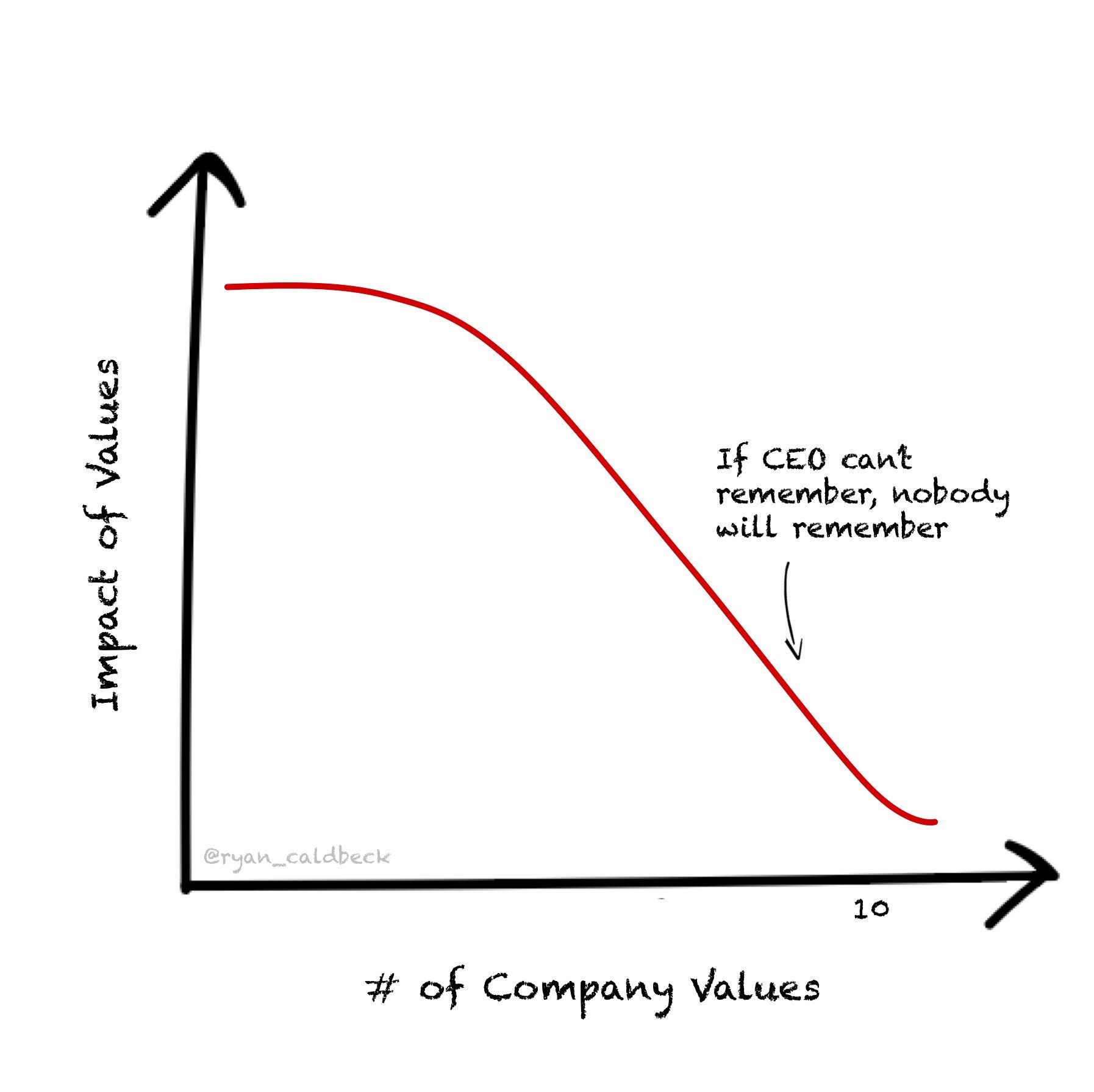

With these thoughts in mind, I dove into the research process with the caveat that if our interviews resulted in debunking any of these, I could leave the ten values exactly as they were.
The 7 Steps We Took To Refresh Our Values
After consulting with our in-house customer research expert, Roy, I applied a framework to ensure I covered all angles and perspectives and avoided as much pre-determined bias as possible.
One approach I wrestled with was whether to dive in with the assumption of tweaking our existing values or to approach with the assumption that we’d be starting completely from scratch and building up our values from there.
After realizing that our 10 values are so deeply ingrained in the culture and have been a major part of each teammate’s journey, I decided that the process of starting from scratch would be a bit more comprehensive than we needed. We moved forward with the premise that we would edit or add to the existing values.
Here is a breakdown of the steps I took:


Step 1: Interview the team
My first step was to go straight to the source: Our team. I interviewed 20 different teammates – or about 30% of Buffer – about how they interpreted each of the values, what moments in their Buffer journey stood out to them, what values they regularly saw in their teammates, and more. I was sure to select teammates of varying tenure, locations, roles, ages, and family status.
These chats were scheduled for 45 minutes, but many went much longer as teammates discussed company and personal triumphs and struggles. It wasn’t always the direct questions that led to the most telling illustration of which values we live and breathe.
Another key question was to identify which values come to mind first for teammates. This happened to coincide with a fun activity during our company retreat, so our most recognizable values became a “Family Feud” style question on our Buffer game show:
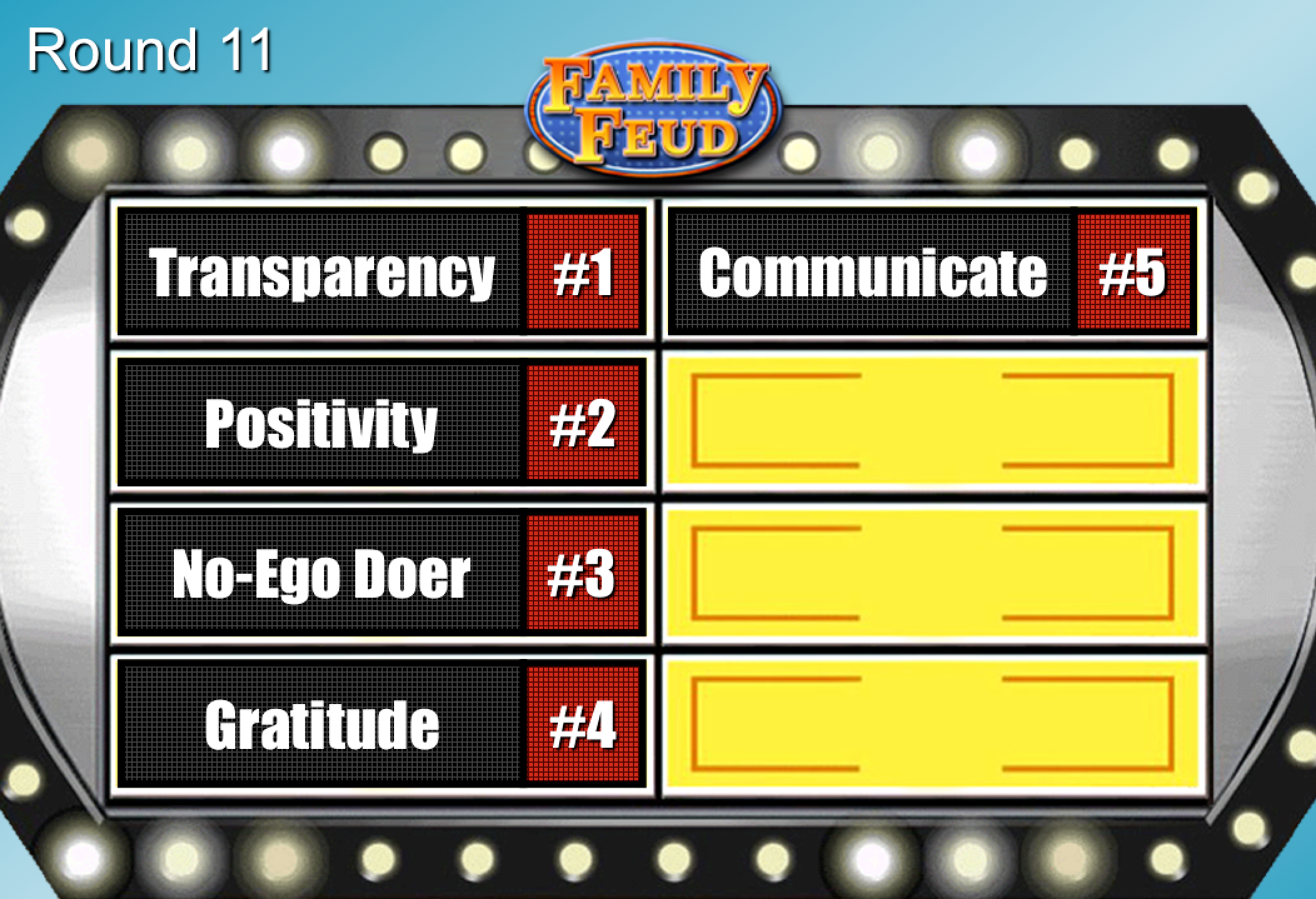

Step 2: Write the first draft
Those four little words feel a bit misleading…Between the interviews and putting down the actual words of that first draft, there was a lot of deep thinking, reflecting on the interviews, reviewing those interview notes extensively and discussing those findings with coworkers.
The first draft perhaps took several false starts before it even reached the “first draft” stage. Free-form writing, listing assorted words, creating a Wordle from all the interviews… these things helped me get the ideas in one place, and then into a legible draft.
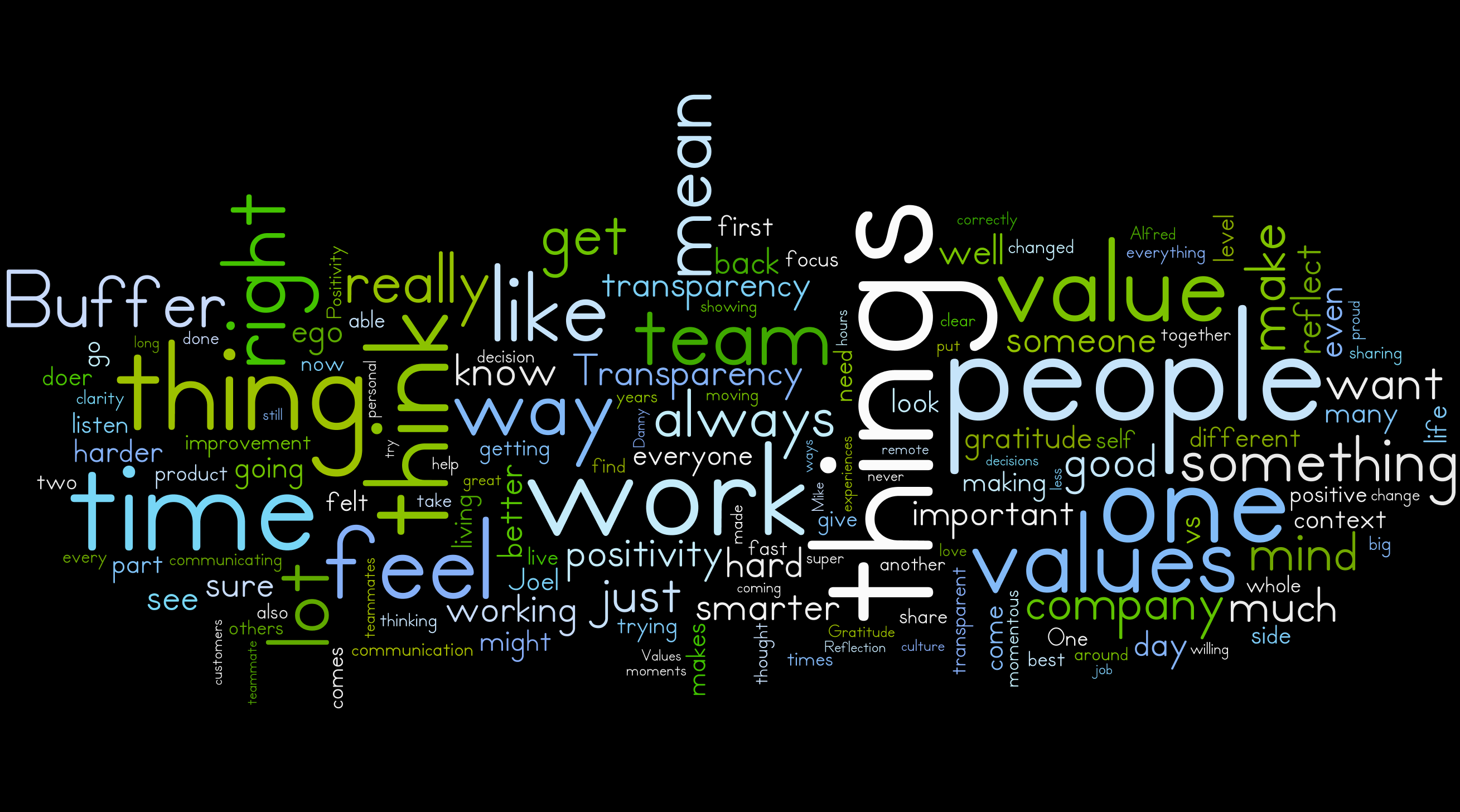
If you’re opting to completely overhaul your values, this step might better involve every employee to some extent (through surveys and interviews and group discussions, perhaps.)
For us, Joel and our Director of People, Courtney, gave some initial thoughts and feedback on my first draft, along with a roadmap of the ideal next steps.

Step 3: Test the first draft
Before making any of the changes Joel had suggested, I took the draft to folks I’d interviewed before and validated/invalidated any of the items Joel caught.
Some folks echoed very clearly what Joel had suggested, which helped easily make the decision to make that change. For some, I asked questions that weren’t entirely direct about a specific change but might touch on it.
For example, Joel shared, “Perhaps with removing X value, we need a new value that specifically addresses Y_ situations?” And I’d ask folks, “Is there anything you feel that we’re missing in this draft?” and by the end of our chat, we might go more direct, “Do you feel Y_ is represented in this list?”
From there, I made edits that felt supported or kept a figurative “pin” in the ideas that didn’t feel fully validated, yet.
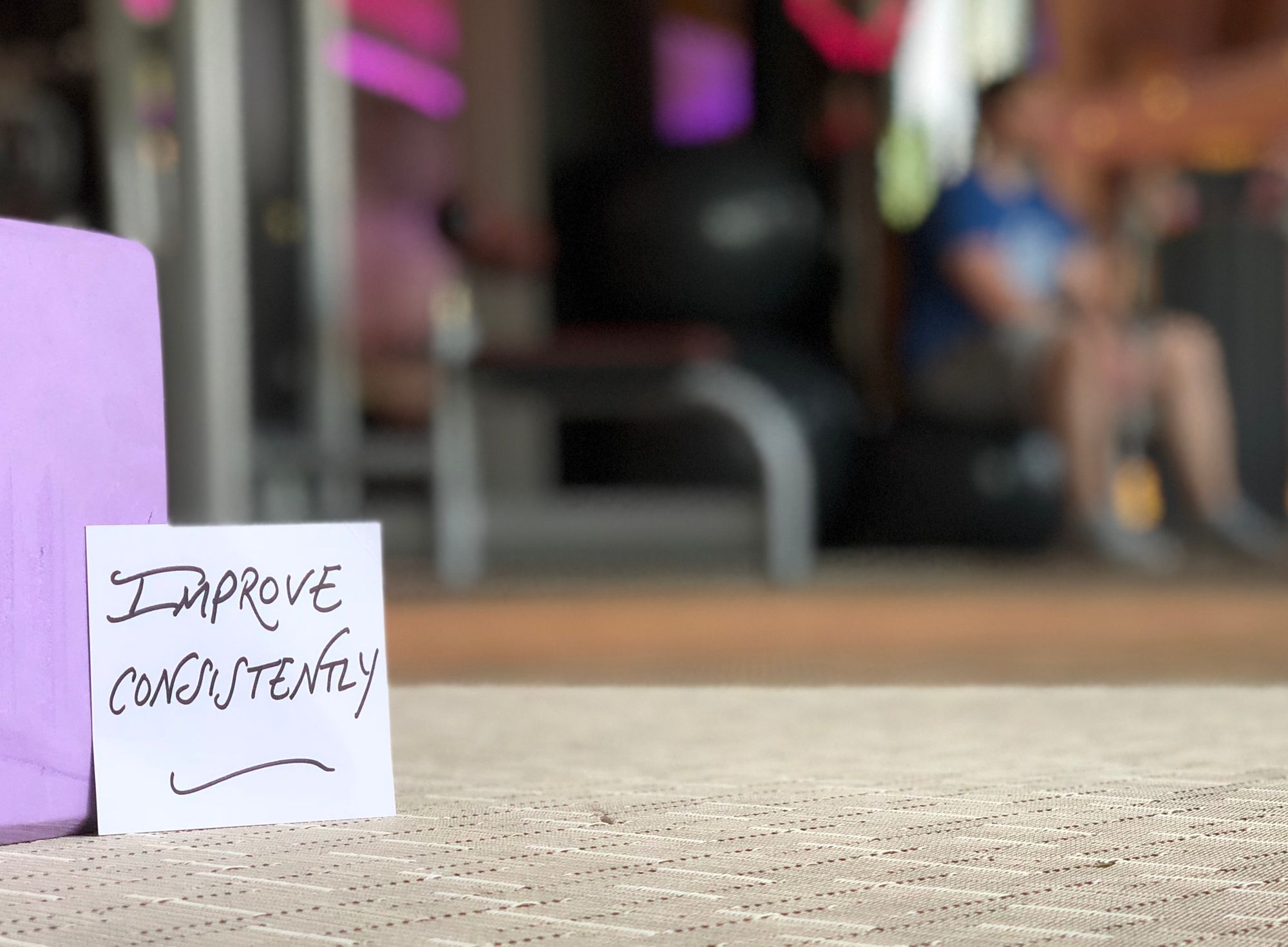
Step 4: Edit and Interview Again
After making those edits, I chatted with another five teammates who I’d initially spoken to (to prevent group-think bias from influencing opinions) and gathered more thoughts. I’d send a personalized document for each individual teammate to make any notes, edits or comments and then set up a time to talk with that teammate in a video call and really dig into how each change (or lack of change) felt.
When I had conflicting data or opinions, I simply called upon more teammates to hear a wider audience’s views on any, particularly sticky item. There were a few values that felt particularly divided and I did some A/B type testing to see what words, phrases or formatting resonated the most with the truest intent of the value.
I made more edits, presented the third draft to 10 entirely new teammates. It was fun to bring in completely fresh eyes at this time and see how things felt. By this point, I’d established not only the top-level values but drafted the bullet points as well to better expand on what the value represented.
I repeated this process with the executive leadership team. Now, I was nearing the ultimate deadline, the company retreat, and feeling more confident in the data collected.
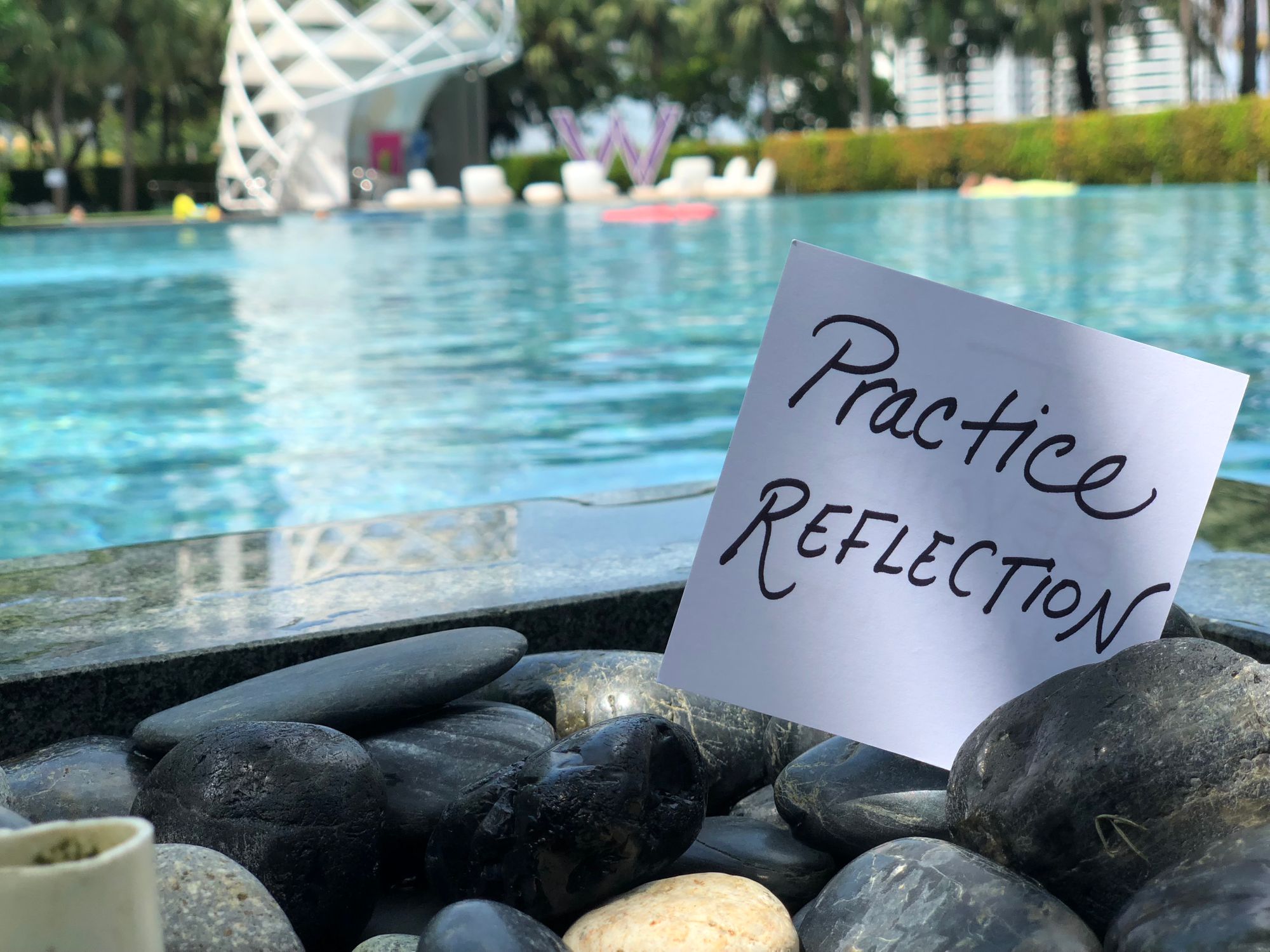
Step 6: Share with the entire company for feedback
I made edits, presented our fifth draft to the entire company through a presentation where I explained the project goals, research findings, and reasoning behind the changes.
After the presentation, I gave each table (4–8 people) a specific value to discuss with a few prompts such as:
- “What do you think of when you think of this value?”
- “What times or instances have you seen this value lived out within Buffer?”
- “Do these bullet points represent what we see in the company and what we want to aspire to?”
Each group took notes in their own document and presented any suggested edits to the bullet points and overall wording.
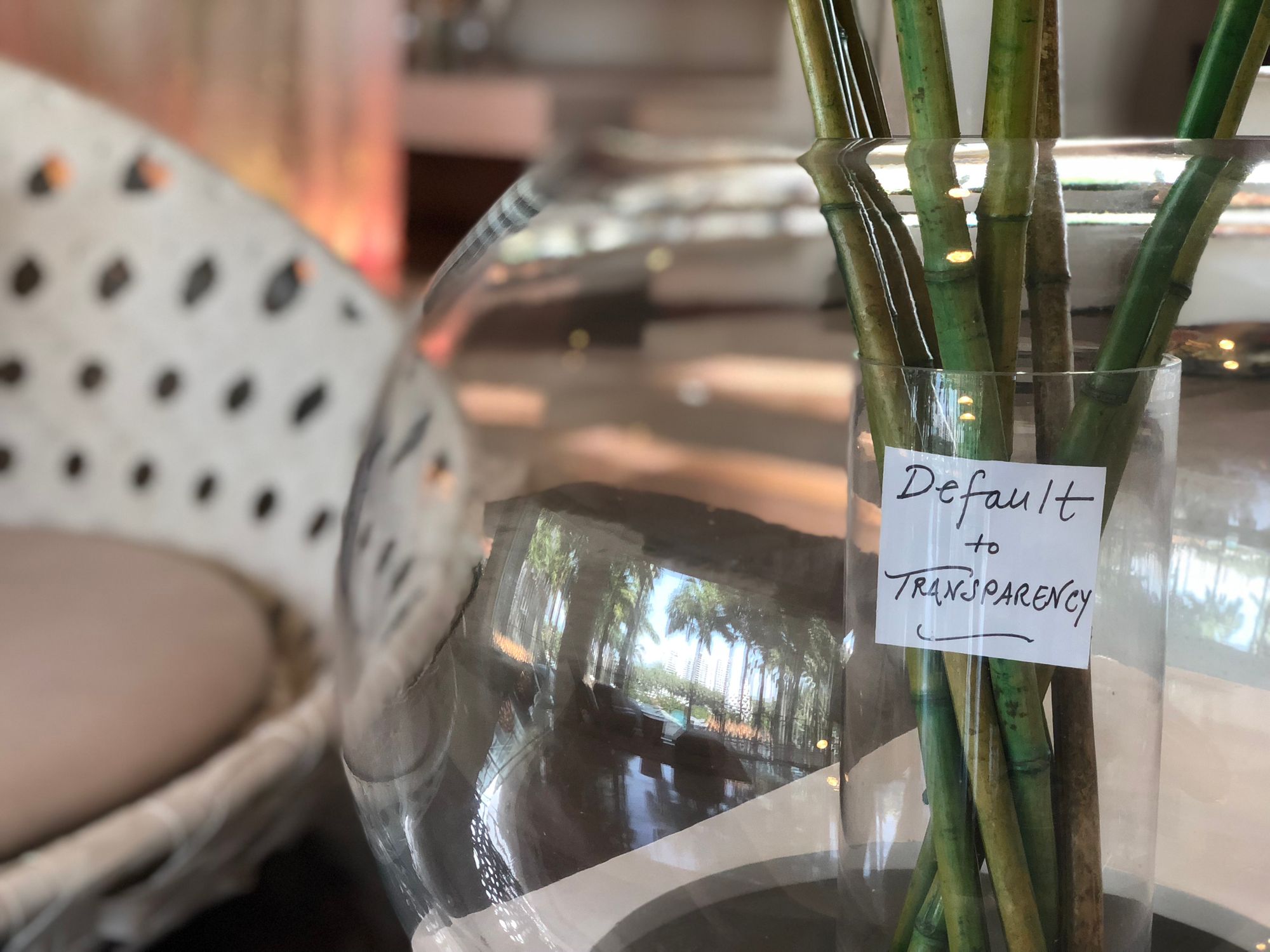
Step 7: Hooray! A final version!
I took all the feedback and made some changes from the group discussions that felt validated by the body of research, and voila! I had a final version!
It’s important to note here, too, that I don’t ever view our values as “done” — they are living, breathing and ever-evolving, and I’m already thinking on and planning for a future “gut check” once a year or so to see if the values are still relevant and reflective.

Where did some of the “missing” values go?
There are several of the original values that did not make the list of six core values, including Communicate with Clarity, Be a No Ego Doer, Listen First then Listen More, Do the Right Thing and Focus on Self Improvement.
Instead, these all have been rolled into the new values in some way or we feel are evident within the wider body of the values. For example, I felt that Do the Right Thing was a natural evolution of following all six of these values and thus not needed to be stated.
I also “nested” many of these values in the new list, so they are never truly going away and will continue to be a part of our lexicon and culture.
What do you think?
What do you think of our process? Of the revised set of values?
We’d love to hear your thoughts and suggestions in the comments below!
Try Buffer for free
190,000+ creators, small businesses, and marketers use Buffer to grow their audiences every month.




